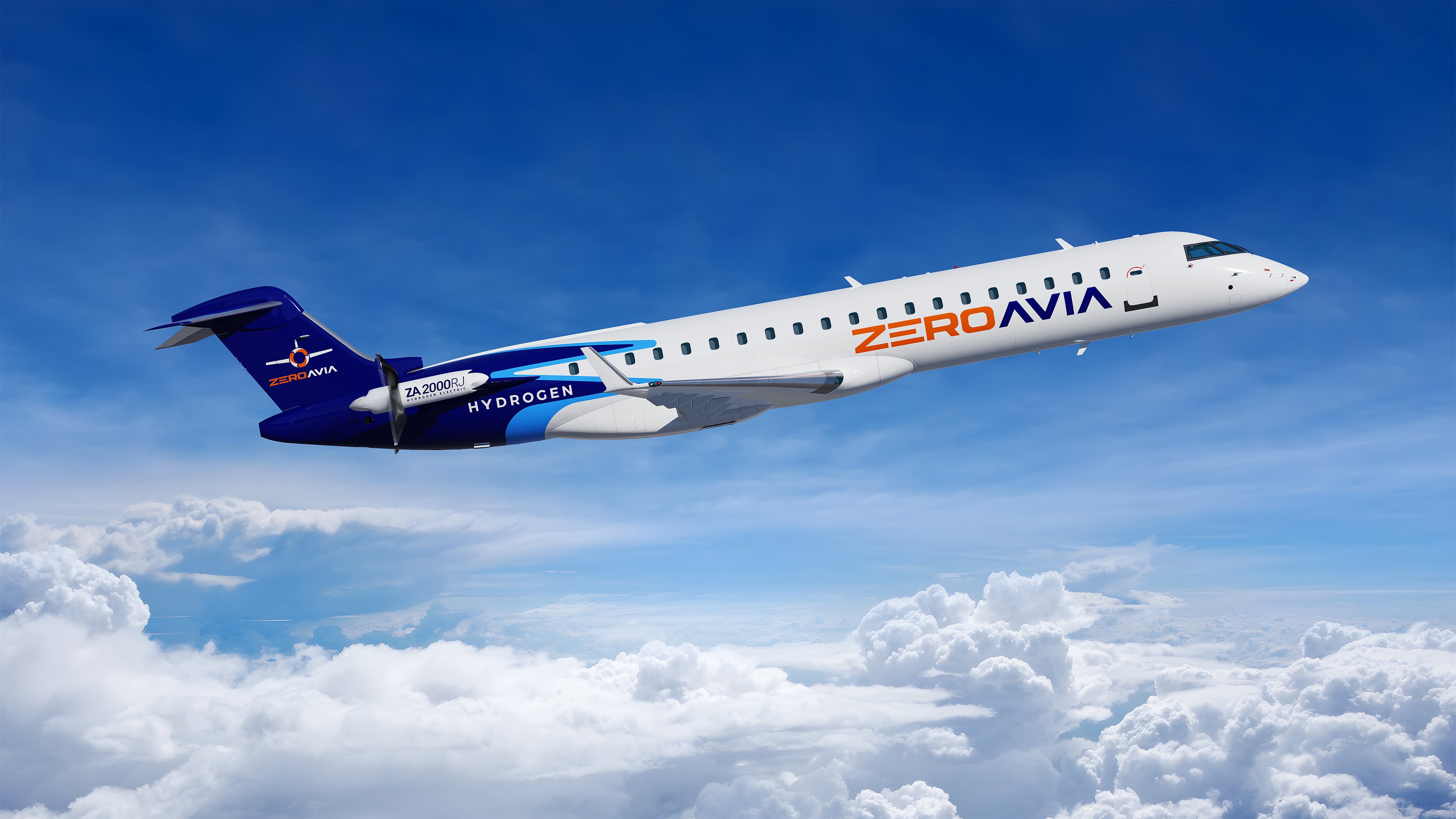American Airlines is investing an undisclosed sum in hydrogen propulsion system developer ZeroAvia and has signaled its intention to add hydrogen-powered aircraft to its fleet. In an August 3 announcement, the major U.S. carrier said that under a memorandum of understanding with the California-based start-up it could order up to 100 of its planned propulsion systems to power regional jets.
ZeroAvia is preparing to start test flights for its 600-kW ZA600 hydrogen-electric powertrain, which it says could be used to convert a 19-seat aircraft capable of flying up to 300 miles (480 km) and start commercial operations by 2024. The company says it expects its larger, two- to five-megawatt ZA2000 powertrain to be ready for market from 2026 and that it will be able to support aircraft with up to 80 seats on sectors of up to 700 miles (1,100 km). While the ZA600 will run on hydrogen gas, the ZA2000 will use liquid hydrogen.
The company declined to specify which aircraft American Airlines intends to have converted to hydrogen propulsion, or how and when the conversion work on up to 50 airframes will be done. In May, ZeroAvia announced the expansion of an earlier partnership agreement with Mitsubishi’s MHI RJ Aviation Group, which in 2020 acquired Bombardier’s CRJ Series of regional jets, for which it now provides maintenance, engineering, airworthiness certification support, refurbishment, asset management, marketing, and sales.
Almost 2,000 of the 50- to 100-seat aircraft were delivered between 1991 and 2020, and in theory, some of these could be available for conversion. A marketing graphic depicting an airliner with ZeroAvia's powertrain installed bears a close resemblance to the CRJ, with what looks like a pair of pusher-configured, unducted fans replacing the current General Electric CF34 turbofan engines.
In July, ZeroAvia announced that it had raised a further $30 million from new investors, including International Airline Group, which owns British Airways and Iberia. United Airlines and Alaska Airlines have previously invested in the company. This week, the company said that it has now raised more than $150 million in total, including $68 million from the Series B round.
During July's Farnborough Airshow, American Airlines made a pre-delivery payment commitment to UK-based Vertical Aerospace for 50 of its four-passenger VX4 eVTOL aircraft, following up on a 2021 commitment to order up to 250 (plus 100 more options). Several other major airlines, also including United Airlines, Virgin Atlantic, Japan Air Lines, Gol, and Kenya Airways, have also committed to adding eVTOL vehicles to their fleets in agreements with aircraft developers also including Eve and Archer.
“Our investment in ZeroAvia’s emerging hydrogen-electric engine technology has the potential to play a key role in the future of sustainable aviation,” said American Airlines CFO Derek Kerr. “We are excited to contribute to this industry development and look forward to exploring how these engines can support the future of our airline.”
American Airlines is committed to achieving net-zero greenhouse gas emissions by 2050. In the short term, it is working to increase the use of sustainable aviation fuel and has received validation from the Science Based Targets Initiative for its interim 2035 emissions reduction targets.
